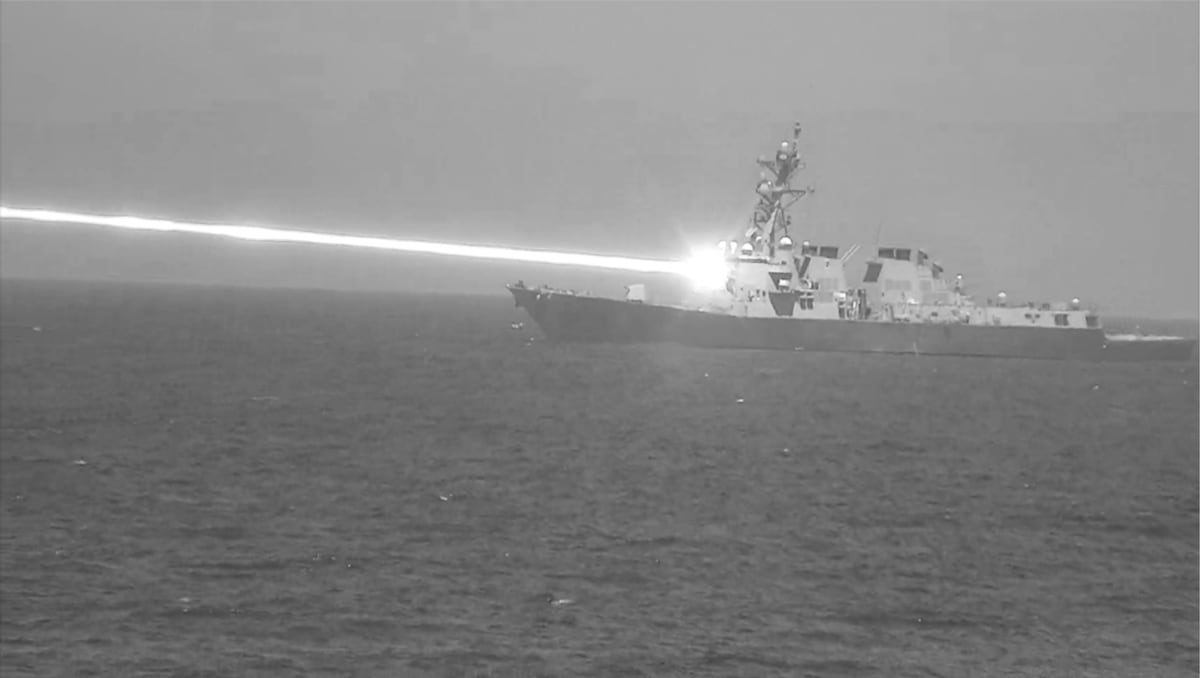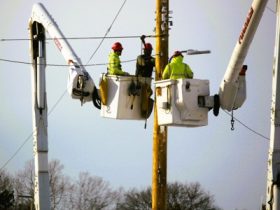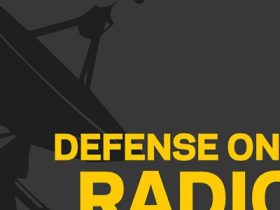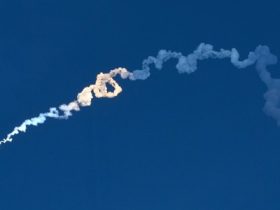The U.S. Navy successfully tested its High-Energy Laser with Integrated Optical Dazzler and Surveillance, or HELIOS, system on one of its warships in fiscal 2024, according to a recently released report.
The Arleigh Burke-class destroyer Preble fired its HELIOS system to zap an aerial drone during a weapons testing exercise in 2024, according to an Office of the Director, Operational Test and Evaluation report published in January.
The report, which did not provide a date or time of the laser’s deployment, included a black-and-white photo showing a streak of white light beaming out from the vessel into the sky.
The Center for Countermeasures — a program developed in 1972 to gauge the Defense Department’s ability to combat emerging technological threats — conducted 32 tests in fiscal year 2024, which included the “development and evaluation of directed energy weapons,” according to the report.
This test conducted on the Preble was run “to verify and validate the functionality, performance, and capability” of the HELIOS system, the report said.
It’s unclear where the test took place. The Preble departed Naval Base San Diego, California, in September 2024 and arrived in Yokosuka, Japan, on Oct. 12, 2024.
Lockheed Martin delivered the 60-plus-kilowatt laser to the Navy in August 2022, when it became the first tactical laser system to be installed in existing ships.
Unmanned warfare, especially in the Red Sea and Gulf of Aden, where Navy ships have intercepted drones and missiles launched by Iran-backed Houthi rebels since fall 2023, has underscored the need to accelerate the technology’s deployment for the Navy, Military Times previously reported.
In 2024, Vice Adm. Brendan McLane, acknowledging the Navy did not have a laser it could field, noted a directed-energy weapon would assist U.S. warships against Houthi combatants.
The integration of lasers on Navy vessels would also allow crews to conserve munitions, Military Times previously reported.
The Defense Department has spent $1 billion annually to develop high-energy lasers and high-power microwaves, but without the tangible results that Navy leadership craves, according to the same report.
The service has faced challenges in developing and implementing directed-energy weapons for myriad reasons, including difficulty determining laser use in the field and concerns the system won’t meet operational needs. Overall tech development, finding a power source aboard ships and potential obstacles presented by the environment, like fog and wind, have also proved challenging.
Currently, the Navy has eight Optical Dazzling Interdictor, or ODIN, laser dazzlers, which disrupt enemy sensors, integrated into Arleigh Burke-class destroyers, according to the Congressional Research Service’s December 2024 report on Navy lasers. There is also a 150-kilowatt Laser Weapon System Demonstrator, or LWSD, installed on a San Antonio-class amphibious transport ship.
Riley Ceder is a reporter at Military Times, where he covers breaking news, criminal justice, investigations, and cyber. He previously worked as an investigative practicum student at The Washington Post, where he contributed to the Abused by the Badge investigation.
Read the full article here








Leave a Reply